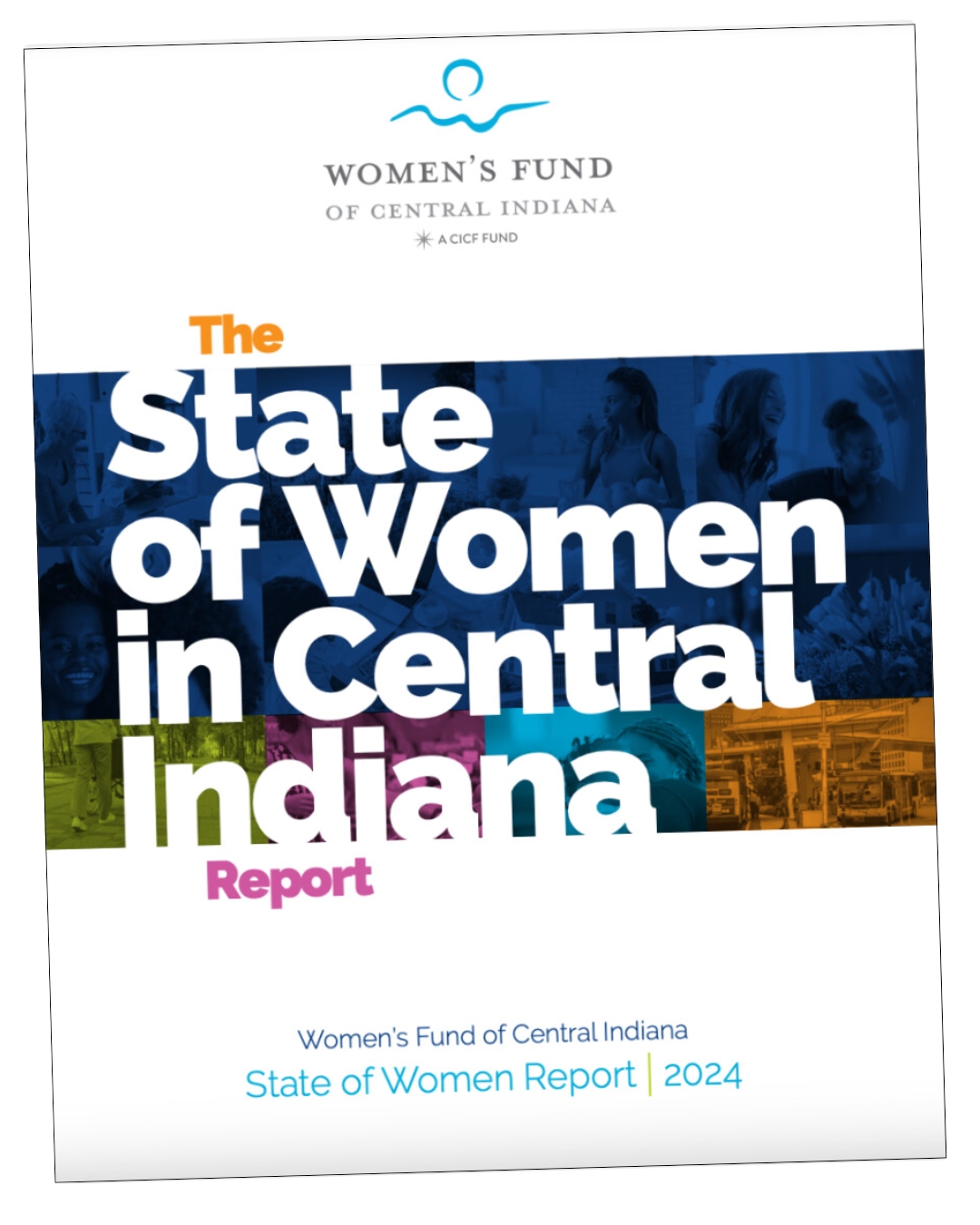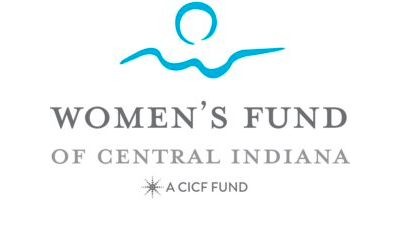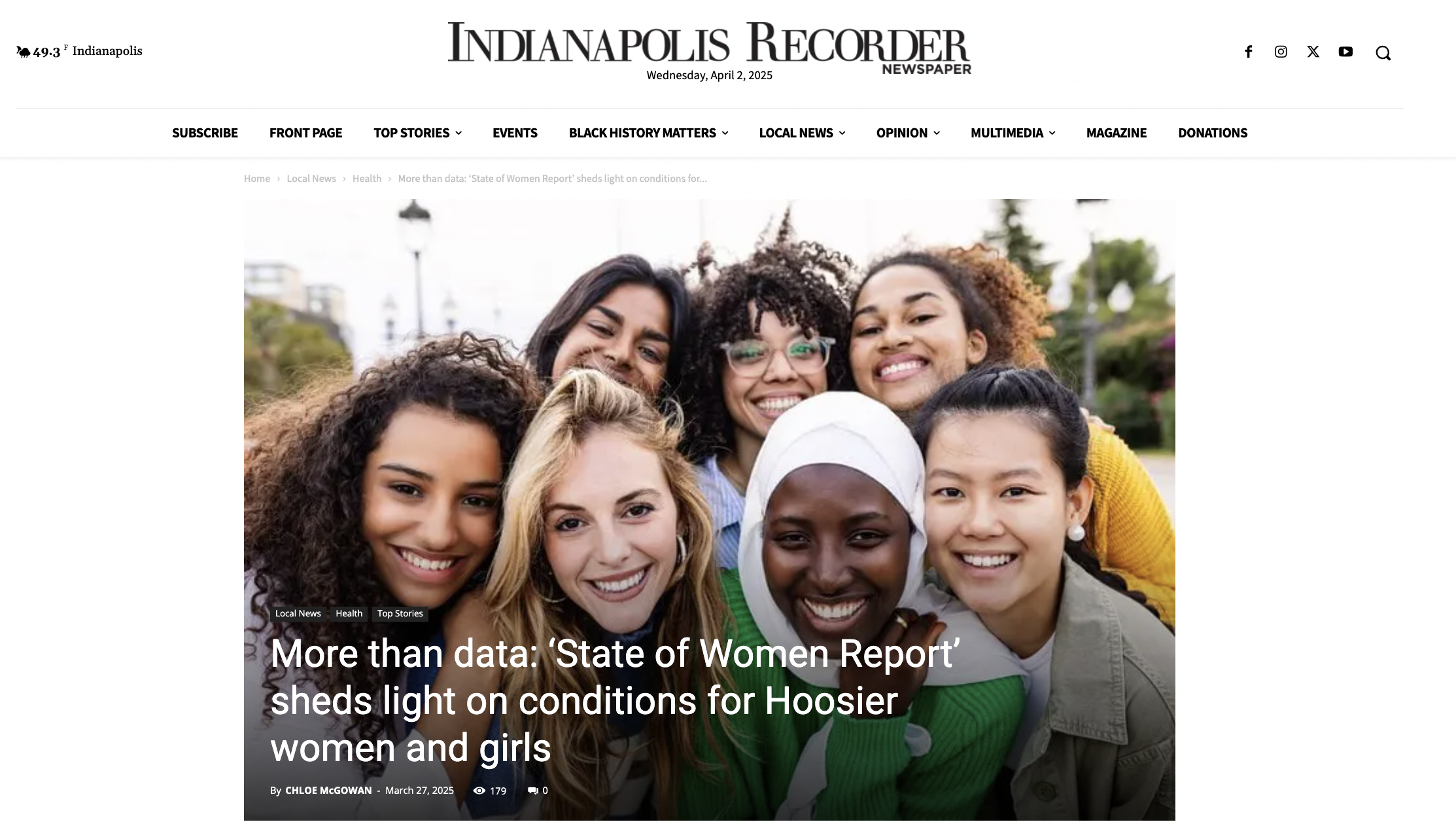 The article below was published by the Indianapolis Recorder: https://indianapolisrecorder.com/state-of-women-report-sheds-light-on-hoosier-women-and-girls/
The article below was published by the Indianapolis Recorder: https://indianapolisrecorder.com/state-of-women-report-sheds-light-on-hoosier-women-and-girls/
The Women’s Fund of Central Indiana released their first “State of Women in Central Indiana Report” in December 2024, but what exactly does that mean?
For starters, tangible data is now readily available to inform decision-makers, educators and nonprofit leaders about what resources are needed for half of the state’s population. Beyond that, it asks whether women can thrive in Central Indiana.
“We cannot know the answer to that question without a full picture of what it means to identify as a woman here, informed by data and women’s own voices,” the report’s introduction states. “Only when we can name the inequities, problems or opportunities for women can we address them.”
Led by Tamara Winfrey-Harris, the Women’s Fund of Central Indiana began working in 2023 on a new strategic plan informed by community voices and data that reflected women’s experiences. The Girl Coalition of Indiana had already put out the Indiana Girl Report — an annual study on the well-being of girls in Indiana with recommendations for parents, youth service providers and policymakers — but a study like that did not yet exist for women over the age of 18.
“We knew that the Institute for Women’s Policy Research — that keeps a report card on the states — had given Indiana a D grade,” Winfrey-Harris said. “We wanted to dig deeper into that and find out why.”
Produced by the Polis Center at IU Indianapolis and its partners, the State of Women in Central Indiana Report aimed to examine the health and well-being of women in the community, Winfrey-Harris said. It covers topics from domestic violence and safety to housing, physical and mental health, transportation, caregiving, financial stability, food access and security.
In short, the study examined how women’s basic needs are or are not being met.
“We don’t have the excuse to say that we don’t know what women and girls’ lives are like,” Winfrey-Harris said. “Now we have to do something about it. So, I encourage women to make sure, if you’re in a space with decision-makers, how to make decisions around women and girls, that you make sure that they have this information.”
However, Winfrey-Harris said it is also imperative that women are heard because data doesn’t tell the whole story.
Women make up 52% of the population in Central Indiana, which is divided demographically into 76% white women, 16% Black women, 5% Hispanic women and 3% Asian women. Younger women comprise 23% of that population, with 15% senior women and 38% middle-aged women.
However, regarding political representation, the report found that women make up only 20% of the State Senate, 31% of the State House and 29% of statewide executives.
“We don’t have adequate representation in the state house, like, we are not 52% of the people who are making policy decisions in the state,” Winfrey-Harris said. “Which means we have to make sure that they hear our voices, especially now the states, the legislature is in session.”
In comparing data from the Indiana Girl Report and the State of Women Report, Winfrey-Harris said many of the issues concerning women and girls in Indiana — like access to housing, financial security and mental health — are connected.
“You see that girls are struggling, but then you also see that women 18 to 34 are also struggling more when it comes to depression and anxiety,” Winfrey-Harris said. “So, if we don’t solve it when they’re younger, they carry it into adulthood, and it’s a cycle, right?”
Think of a single mother who is the head of her household in Central Indiana, Winfrey-Harris said. More than likely she’ll be paying almost half her income toward housing — because single mothers are more likely to be evicted and also because of the wage gap. However, most of the common or minimum wage jobs would not get her above the $25/hour threshold needed to provide safe housing or even childcare for non-school-age children.
These interconnected problems make it difficult for women’s families to be financially stable and increase the “need to solve women’s problems across generations,” Winfrey-Harris added.
Right now, Winfrey-Harris said the Women’s Fund of Central Indiana’s priority is health — including mental and reproductive health — economic mobility, girls’ empowerment and personal safety/intimate partner violence.
One of the biggest issues facing women and children in Indiana is domestic violence. Julie Henson, vice president of operations at Coburn Place, said 1 in 2 Hoosier women experiences domestic violence or intimate partner violence. It is also one of the leading causes of homelessness among women and children in Indiana.
“We’re ranked number five in the nation, and so we know that in our state and in Central Indiana, women are experiencing domestic violence pervasively,” Henson said. “We also know that not everyone who experiences domestic violence becomes homeless because of that, but those that do are out of options and in a very precarious, unique situation.”
Coburn Place provides safe housing choices and support services to families experiencing homelessness due to domestic violence. It is one of many women-led nonprofits that receive grant funding from The Women’s Fund of Central Indiana.
The Women’s Fund of Central Indiana funds emergency needs for survivors at Coburn Place through their Flex Funds program. This includes transportation needs but also general operating costs that cover urgent needs as they arrive, Henson said.
“I think that that kind of trust in organizations and trust in women to be able to define what that need is going forward is such a testament to the way that the Women’s Fund, listens to women, tells the story of women and works the center women and move forward to help lift everyone in Central Indiana and beyond,” Henson said.
The data from the State of Women in Central Indiana report identifies areas where “increased resources and efforts are needed” for women to thrive here, which is not only relevant to policymakers but also to researchers, grantmakers and grant seekers, community-serving organizations and government agencies.
“I think it matters because it’s important to understand that these issues are not concepts,” Henson said. “These issues are happening to people and very likely people that you know. These are local, human, urgent things.”
For more information about the Women’s Fund of Central Indiana or to access the State of Women in Central Indiana Report, visit womensfund.org. To read Girl Coalition of Indiana’s Indiana Girl Report, visit girlcoalitionindiana.org.

